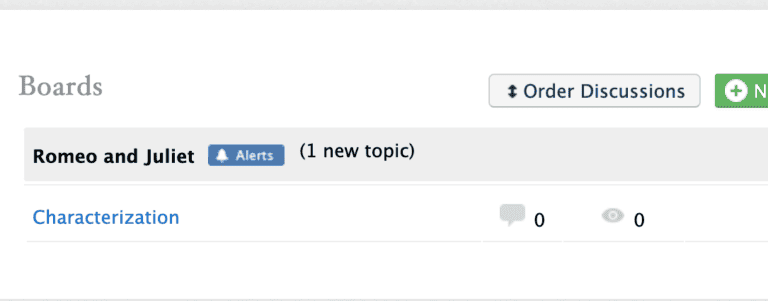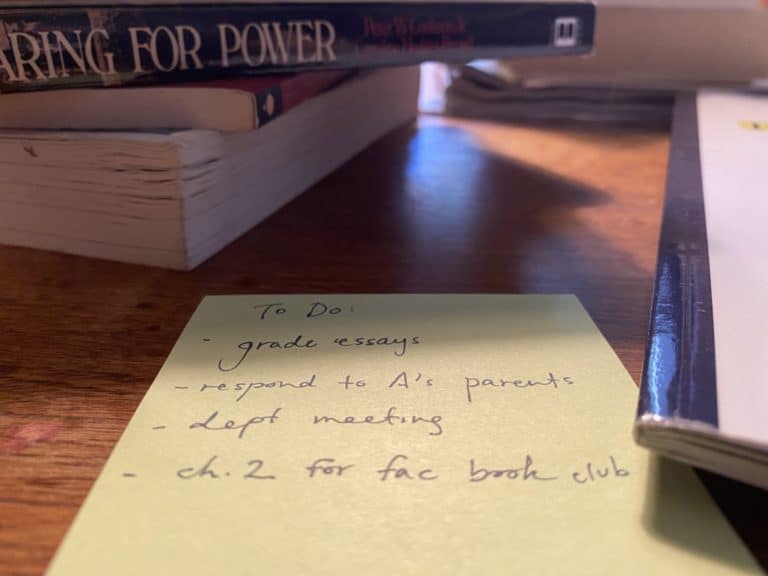When Discussion Across Difference Gets Difficult
What Teachers Can Do to Help Students Through Moments of Polarity
This summer I spoke with hundreds of teachers across nearly a dozen workshops about a near-omnipresent anxiety: how can teachers help students navigate moments of polarity with their peers during this U.S. Presidential election season?
It’s worth noting that at R.E.A.L.®, we are big believers in taking a proactive approach to mitigate these moments: we don’t expect students to be able to have hard conversations until they have had explicit instruction in how to have any conversations. Ideally, this means that when discussion across difference does get difficult for kids, they already have the language to name and the skills to solve for these moments in real time. But the reality is that not all schools take that skills-based approach – and kids are going to be talking about politics this Fall. So what can teachers do?
Here are two scenarios that teachers will likely encounter soon (if they haven’t already in the first weeks of school!), along with tried-and-true strategies for managing them with students of all ages.
Scenario #1: Interrupt Intentionally
You come across a contentious conversation among students and know you need to intervene. What can you do? Use a strategy we call INTERRUPTING INTENTIONALLY.
We’ve all had those moments: you come around the corner and see a small group of students who are suspiciously focused, dramatic, or quiet – and are clearly engaged in a tough conversation. This might be in a classroom before the bell rings, or a cafeteria, or a library, or even during a student-led class discussion. The location doesn’t matter, but your instinct that you need to intervene does. Here are steps you can take to do so thoughtfully:
Step 1: Interrupt and get to ‘we’ – fast.
In a moment where kids are clearly feeling disconnected from each other, insert yourself as a lever and ground them in what you know they share – namely, they are members of the same school community. Use your school’s language to reaffirm that discussion across difference is important – even when it’s hard. Do not shame the students for the fact that their disagreement seems to have gone off the rails. This might sound like: “it can feel so hard to have conversations where we disagree – but we need to recognize that by doing so, we are living out [our school mission] and also practicing skills the world desperately needs.”
Step 2: Apologize, filibuster, and make it about yourself.
When students are engaging in a contentious conversation, they are likely experiencing “amygdala hijacking” and in fight-or-flight mode. Before expecting them to continue the conversation rationally, you should filibuster – buy them time to catch their breath and re-orient. Note that the kids probably won’t be “on-receive” for what you say in this moment, but that’s not the point – yo the goal is just to communicate your personal investment in their experience. This might sound like: “I’m so sorry – didn’t mean to derail the whole conversation here, this kind of stuff truly is how great friendships across difference are built, just wanted to remind you all of our shared values.”
Step 3: Restructure the start, pass it back to students, and stay with them.
As a teacher, it can be tempting to stop after step two once you’ve successfully defused the situation. But to kids, stopping after step two can feel like getting “shut down” or doing something wrong, when in fact – and especially if they haven’t had explicit discussion skills training – they were probably doing their best to have an important, if difficult, conversation. It’s critical that you as a faculty member structure the continuation of the conversation and stay with the students through it. This communicates your confidence in them to “try again” as well as your belief that real discussion is how we grow. This might sound something like: “So where were we? Do you each want to say what you heard last before I jumped in?” or “So where were we? Why don’t you each share what you were saying before I interrupted?”
Scenario #2: Deploy Go-to Sentence Stems
You are facilitating a discussion and a student says something – perhaps intentionally, perhaps unintentionally – that sucks the air out of the room. What can you say? Consider our GO-TO SENTENCE STEMS:
Tell me more about why you’re saying that…I’m really curious.
The trick here is to add the “I’m really curious” at the end – if you just say “tell me more,” it can feel robotic or like you’re “setting up” your student to be deposed or to misspeak.
Where do you think that perspective comes from? It’s crazy when you realize that ideas come from all over everywhere – news articles, personal experiences, social media, family members, the place you grew up…?
By adding the editorial about all the “places” ideas come from, you are giving students several different paths to answer the question – as well as processing time.
What I’m hearing you say is ABC – what did I miss? Is there any part you want to emphasize or clarify?
This communicates to the rest of the class or group that you are holding a student accountable for what they said – while also making that student feel heard and allowing them a second chance to “say it better.”
How else might someone think about this? When we feel strongly about something it can be hard to imagine there are other lines of logic or perspective that might make sense, but it’s a good exercise to think through.
Again, the editorial here helps the student understand why you are directing the conversation this way – and creates an on-ramp for lots of other voices to pitch in. This is also a go-to question for any classroom looking to cultivate “intellectual diversity” – a pillar of the E.E. Ford Framework for Civil Discourse.
What’s home like for you when it comes to this stuff?
This question only makes sense in some situations, but it can be useful in helping students move from political generalities to their own, personal lived experience. It is intentionally vague – allows students to define “home” and “stuff” for themselves (rather than asking, specifically, about parents, or political opinions, for example) and to go a million directions. When students move from political to personal, others are more able to connect.
As educators, navigating this polarized election season can feel daunting, but anticipating and practicing strategies for tackling common scenarios can make it less so.
Skills for Life
Ultimately, at R.E.A.L.®, we see this Fall as a moment to teach discussion skills that will stand students in good stead for discussion – well beyond any election. In order to be engaged scholars, caring friends, and thoughtful citizens, kids need the abilities to listen attentively, to share their opinions with confidence and respect, to give other opinions credence, and to leave open the possibility for mind-changing as evidence of learning.
The strategies shared above are just two of many we use to empower educators to help students have real discussions. My hope is that this tactical approach empowers teachers to facilitate the discussions the world needs!






